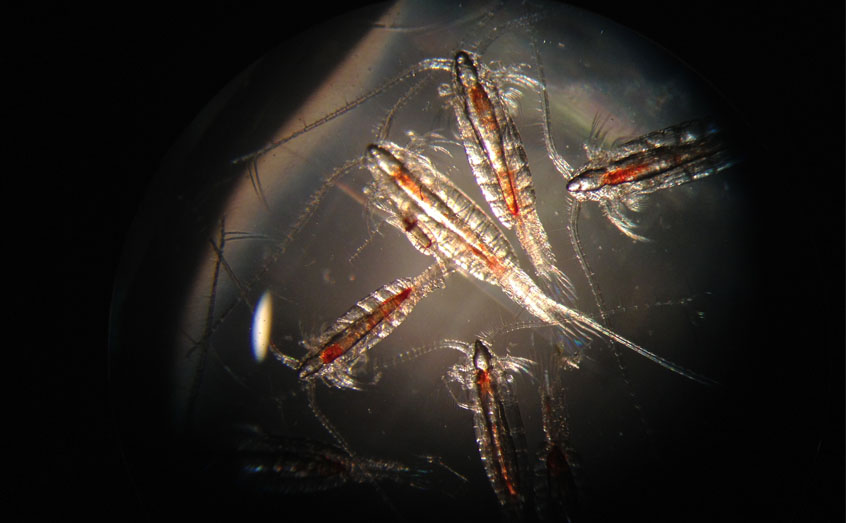SAMS news room
Loch Etive research uncovers clockwork copepods

An experiment conducted in a Scottish loch has revealed how a microscopic animal – the main food source for many larger marine species – schedules its day using its own genetic clock.
The ‘body clock’ of the copepod Calanus finmarchicus shapes its metabolic rhythms and movement through the water column. This in turn has an enormous influence on the entire food web in the North Atlantic and Arctic oceans where Calanus finmarchicus is a central plankton species.
As part of the study, which has been published in the journal Current Biology, scientists from the Oban-based Scottish Association for Marine Science (SAMS) carried out research on Loch Etive, Argyll, where one of the only known isolated populations of Calanus finmarchicus is found.
In the world’s oceans, countless zooplankton species, like copepods and krill, rise to the surface at dusk to gorge themselves on single-celled algae that can only thrive where there is sufficient sunlight. The cover of night offers the zooplankton protection from predators like fish, which need light to hunt. When dawn approaches however, they sink back into the dark depths where they can hide from their predators throughout the day – completing a cycle that likely represents the largest daily movement of biomass on the entire planet.
Though this phenomenon was first discovered over a century ago, researchers are still working to decipher which signals these marine organisms use to decide when to rise and when to descend.
Along with colleagues at the Alfred Wegener Institute, Helmholtz Centre for Polar and Marine Research (AWI) and the University of Oldenburg in Germany, the SAMS team showed that Calanus finmarchicus possesses an internal genetic clock, also called the circadian clock, which produces a specific 24-hour rhythm that functions even without a day/night cycle. This could be important during the constantly dark polar winter and in the deep sea.
Light is only needed in order to occasionally reset the clock and work previously carried out by SAMS researchers showed zooplankton in the Arctic regulated their movements using moonlight, in the absence of sunlight, during the polar winter.
The latest paper’s lead author Sören Häfker of AWI said: “We were amazed to see how precisely the genetic clock maintained its 24-hour rhythm without any external stimuli, and that we found the same rhythm under controlled laboratory conditions as we did in the natural habitat of Loch Etive.”
The copepod Calanus finmarchicus, which can swim many tens of metres in its daily migration, builds up large fat reserves in its body, making it an appealing source of food for many larger animals. As such, its daily migration is extremely important for the ecosystem – especially as global warming has shifted the distribution of many marine species closer to the poles.
Dr Kim Last of SAMS, a co-author on the new study, added: “We have long looked to uncover the mysteries of zooplankton migrations and it appears that the circadian clock, much like our own, has a very important role to play in helping the animals be in the right place at the right time. Such fundamental mechanistic understanding is crucially important if we want to predict how marine ecosystems will respond to the complexities of future climate change.”
